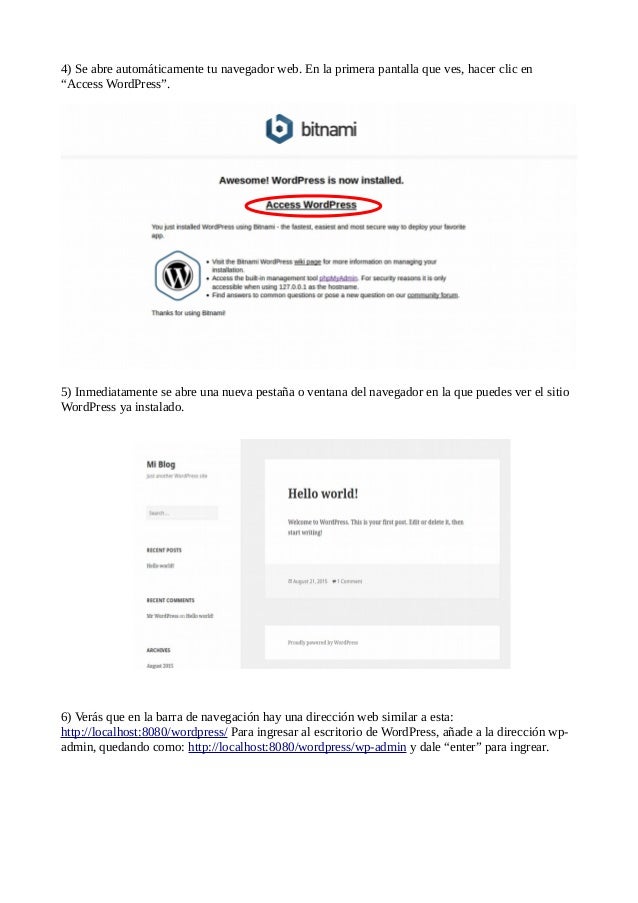

First, your application is built and packaged into a Container. Kubernetes manages your application with several different resource types. Let’s check out the architecture behind running Kubernetes and Elasticsearch. Seeing as many teams don’t have dedicated DevOps engineers and they have to rely on their developers to handle the infrastructure, you may be saving yourself a huge headache by letting Kubernetes manage the cluster.

BITNAMI MEAN TUTORIAL HOW TO
For many, this may be the only way they know how to deploy a large cluster.
BITNAMI MEAN TUTORIAL CODE
You rely on infrastructure as code configurations and not manually setting up and configuring infrastructure.

Kubernetes is also very developer-friendly. Once you configure your Elasticsearch cluster on Kubernetes, the process of deploying it to another cloud provider or on-premises is incredibly simple.

With Kubernetes, you get a cluster that’s easier to configure, manage and scale. Handling persistent data is simple by using persistent volume claims and stateful sets. You should generally not be running databases on Kubernetes, but you can. Even though Kubernetes is designed to run ephemeral, stateless, apps and not databases, there are upsides of running an Elasticsearch cluster on Kubernetes. It has become the de-facto standard for running high-uptime and reliable systems in the cloud and on-premises. Kubernetes has stepped in to solve that issue. These nodes have throughout the years often been VMs that you would spin up and then handle connections between them. It’s deployed in clusters, at least consisting of three nodes. No credit card required – Get started in seconds Why Run Elasticsearch on KubernetesĮlasticsearch can store huge amounts of textual data with the ability to quickly search through it when needed.
BITNAMI MEAN TUTORIAL TRIAL
Start your 14-day free trial See our plans Sematext Kubernetes Monitoring brings logs, events and metrics together to make it easier and faster for you to spot and troubleshoot performance issues. Learn more about Docker from our articles on what is Docker and Docker logs, and if you’re interested in Kubernetes check out our guides on Kubernetes logging and Kubernetes monitoring. What you have to do is tell Kubernetes what to do through the kubectl command line and with yaml resource files. Kubernetes manages all of this and does the heavy lifting so you don’t have to. However, containers are useless without a cluster and orchestrator to run and manage them. This makes packaging and shipping apps to production simple. You don’t have to worry about the underlying infrastructure at all. Running Docker containers is the same across any operating system, as long as the hosts are in a Kubernetes cluster. These containers are stateless and run isolated from the rest of your system. But what is a container orchestrator? To understand Kubernetes, you first need to understand Docker.ĭocker is a container engine that lets you create ephemeral containers to run your applications. Kubernetes is the de-facto standard container orchestrator and by far the easiest way to run and manage clusters in the cloud or on-premises. To learn more about Elasticsearch, check out this Elasticsearch guide. We at Sematext are running a huge Elasticsearch cluster on Kubernetes that handles millions of data points per minute from ingested logs, metrics, events, traces, etc. It’s great for storing and searching through large volumes of textual data, like logs, but can also be used to search many different kinds of documents. It’s also a real-time, distributed, and scalable search engine which allows for full-text and structured search, as well as analytics. What is Elasticsearch?Įlasticsearch is a datastore that stores data in indices. By the end of this tutorial, you will have a running Elasticsearch cluster on Kubernetes, learn best practices to leverage the platforms’ powers, and get some tips about memory requirements and storage. Elasticsearch handles storing and querying data, while Kubernetes handles the underlying infrastructure. However, running Elasticsearch on Kubernetes can save you a lot of trouble. The downside of that is that the more data you have the more of a headache it is to store, query, and make sense of. Data! Huge amounts of data that need to be managed. Even though they are hugely different from one another, they all have one thing in common. Application Performance Monitoring Guideīig data, AI, machine learning, and numerous others are all buzzwords we seem to throw around lightly in recent years.


 0 kommentar(er)
0 kommentar(er)
